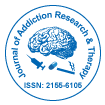Notre groupe organise plus de 3 000 séries de conférences Événements chaque année aux États-Unis, en Europe et en Europe. Asie avec le soutien de 1 000 autres Sociétés scientifiques et publie plus de 700 Open Access Revues qui contiennent plus de 50 000 personnalités éminentes, des scientifiques réputés en tant que membres du comité de rédaction.
Les revues en libre accès gagnent plus de lecteurs et de citations
700 revues et 15 000 000 de lecteurs Chaque revue attire plus de 25 000 lecteurs
Indexé dans
- Indice source CAS (CASSI)
- Index Copernic
- Google Scholar
- Sherpa Roméo
- Ouvrir la porte J
- JournalSeek de génamique
- Clés académiques
- JournalTOC
- SécuritéLit
- Infrastructure nationale du savoir de Chine (CNKI)
- Bibliothèque de revues électroniques
- Recherche de référence
- Université Hamdard
- EBSCO AZ
- OCLC-WorldCat
- Catalogue en ligne SWB
- Bibliothèque virtuelle de biologie (vifabio)
- Publons
- Fondation genevoise pour l'enseignement et la recherche médicale
- Euro Pub
- ICMJE
Liens utiles
Revues en libre accès
Partager cette page
Abstrait
Headache in Buprenorphine Detoxification Treatment
Arash Bostani, Nasrin moradian and Hosein Kasmayi
Background: Buprenorphine is a partial mu-opioid receptor agonist that is an effective agent for agonist therapy for opioid addiction and for the management of withdrawal from heroin and other opioids.
Methods: 379 addict patients who admitted for detoxification therapy with buprenorphine were enrolled in the study. Withdrawal scale (using short opiate withdrawal scale) and headache intensity (11-point numerical rating scale) were assessed daily during detoxification course. History of headache, outcome of patients and dose of buprenorphine were recorded also.
Result: 239 patients (63.1%) experienced headache during assessment that 43% of them experienced more severe headaches based on median of pain intensity. Positive history of chronic headache was more common in these patients (81.1% versus 17.8%, p<0.05). During mild headache person-days, dose of buprenorphine was lower and withdrawal scale as higher than other days. We didn’t find any significant difference between mean withdrawal scales and dose of buprenorphine in severe headache days and other days. Incidence of severe headache in dropped out patients was similar to other patients and experience of severe headache was less common in patients who chose buprenophine for maintenance therapy.
Conclusion: We concluded that headache is an important compliant during treatment of opiate addiction with buprenorphine and is not just a symptom of opiate withdrawal.
Revues par sujet
- Agriculture et Aquaculture
- Biochimie
- Chimie
- Food & Nutrition
- Génétique et biologie moléculaire
- Géologie et sciences de la Terre
- Immunologie et microbiologie
- Ingénierie
- La science des matériaux
- Le physique
- Science générale
- Sciences cliniques
- Sciences environnementales
- Sciences médicales
- Sciences pharmaceutiques
- Sciences sociales et politiques
- Sciences vétérinaires
- Soins infirmiers et soins de santé
Revues cliniques et médicales
- Allaitement
- Anesthésiologie
- Biologie moléculaire
- Cardiologie
- Chirurgie
- Dentisterie
- Dermatologie
- Diabète et endocrinologie
- Gastro-entérologie
- Immunologie
- La génétique
- Maladies infectieuses
- Médecine
- Microbiologie
- Neurologie
- Oncologie
- Ophtalmologie
- Pédiatrie
- Recherche clinique
- Soins de santé
- Toxicologie

 English
English  Spanish
Spanish  Chinese
Chinese  Russian
Russian  German
German  Japanese
Japanese  Portuguese
Portuguese  Hindi
Hindi